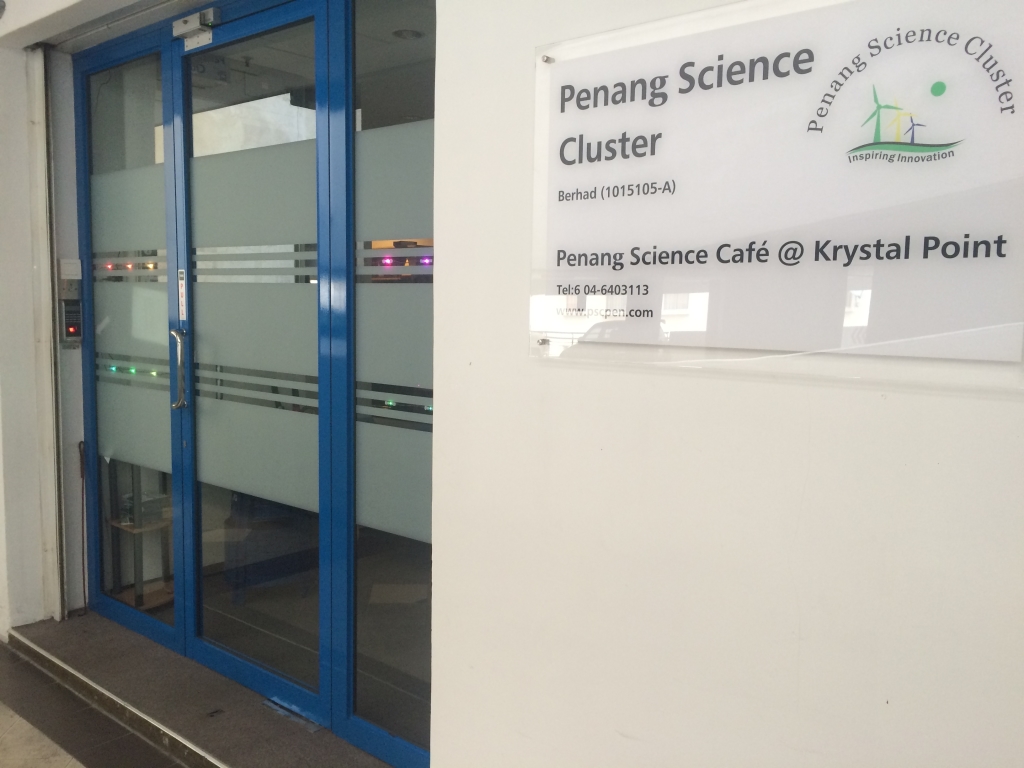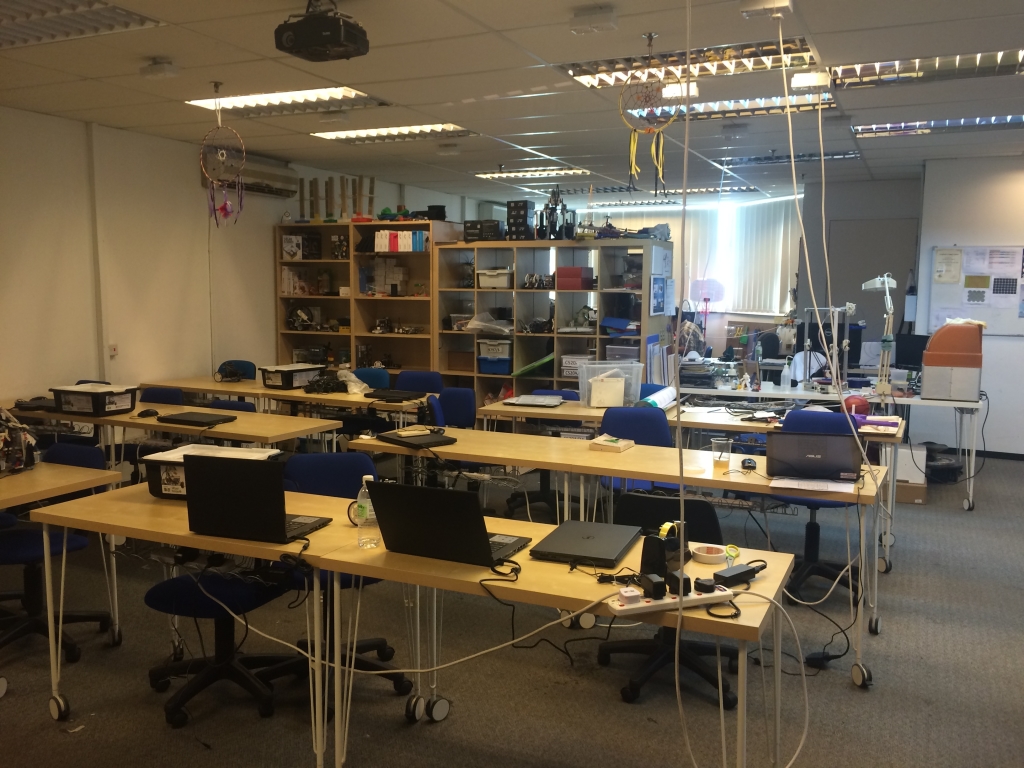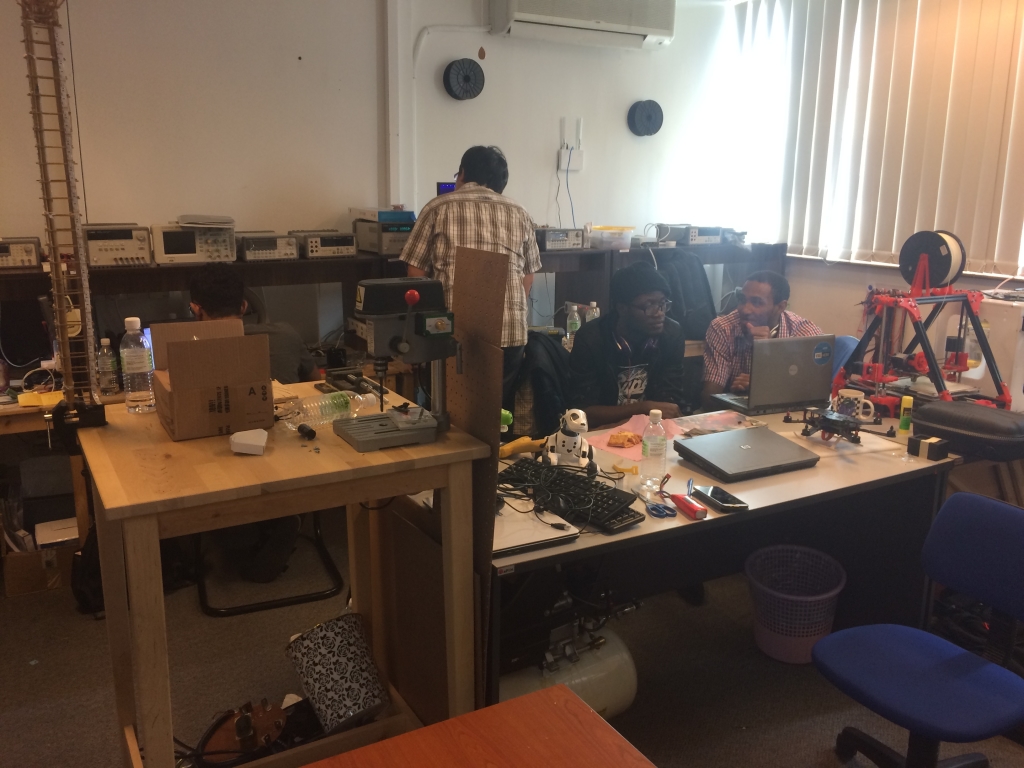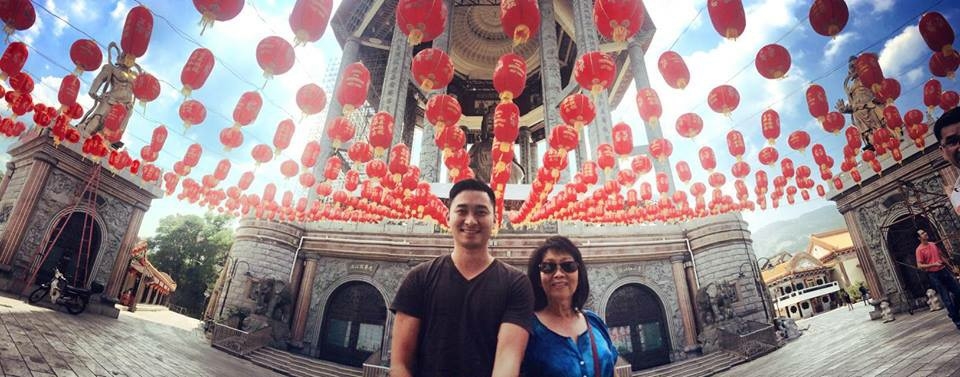I stumbled across the Penang Science Cluster (PSC) while I was with my family in Penang, the island in Malaysia where I was born. I was attempting to find a maker space to finish soldering some wires for my motorized panorama selfie stick, and ended up on the PSC’s website. I knew I had to check it out.
The taxi dropped me off in front of a multistory shophouse building—one of many that dot the city. From the outside, there was no science to be found. The main lobby of the building seemed to be shared with a hotel, and I eventually located the directory. On the directory, I found the room number for the Penang Science Cluster and took the elevator to the third floor where it was located. When the door of the elevator opened, I was greeted by a sterile hallway—I still hadn’t seen any science around. However, walking a few steps down the hallway, I found the sign for the Penang Science Cluster, and could tell that there was some cool stuff going on by looking at the door.
Upon entering, I was greeted by Peng Ee Ooi, the CEO of the Penang Science Cluster. He explained to me the science cluster was created to offer a place to educate the youth of Penang on the extremely hot fields of robotics, electronics, drones, and software. Much of the investment in the PSC was not by government, but by private companies such as Motorola and Intel, which donated money, equipment, and supplies.
One of the projects that two kids from Ethiopia were working on, and that they were eager to show me, was a railgun that they had built. A railgun is a contraption that uses electromagnetism to propel a projectile at high velocities towards a target. They fired a hex nut somewhere into the room, and we never found it. Another student was working on customizing a drone with carbon fiber parts.
After chatting with many of the students there for a while, I set about completing my motorized selfie stick. All I needed to do was solder a few wires to my Arduino nano which I had bought nearby. Everything worked flawlessly. The photo you see at the top behind the title of this article is the first panorama photo that I captured with the selfie stick, and shows the lab area of the PSC. The following photo is one that I captured later in Penang, showing the output that can be achieved.
The experience so far was markedly different from that of IDA Labs in Singapore, where the government had set up a maker space in the National Design Centre. This was more of a home-grown, grassroots type of setup, with more focus on education rather than startups. However, both IDA Labs and the Penang Science Cluster were fantastic experiences, and I’ll definitely be stopping by again next time I’m in either region.



